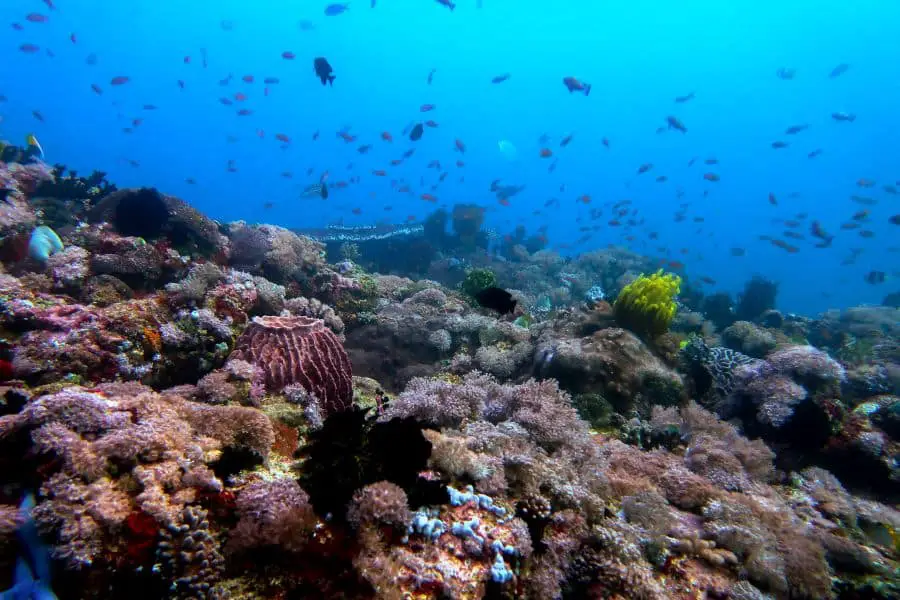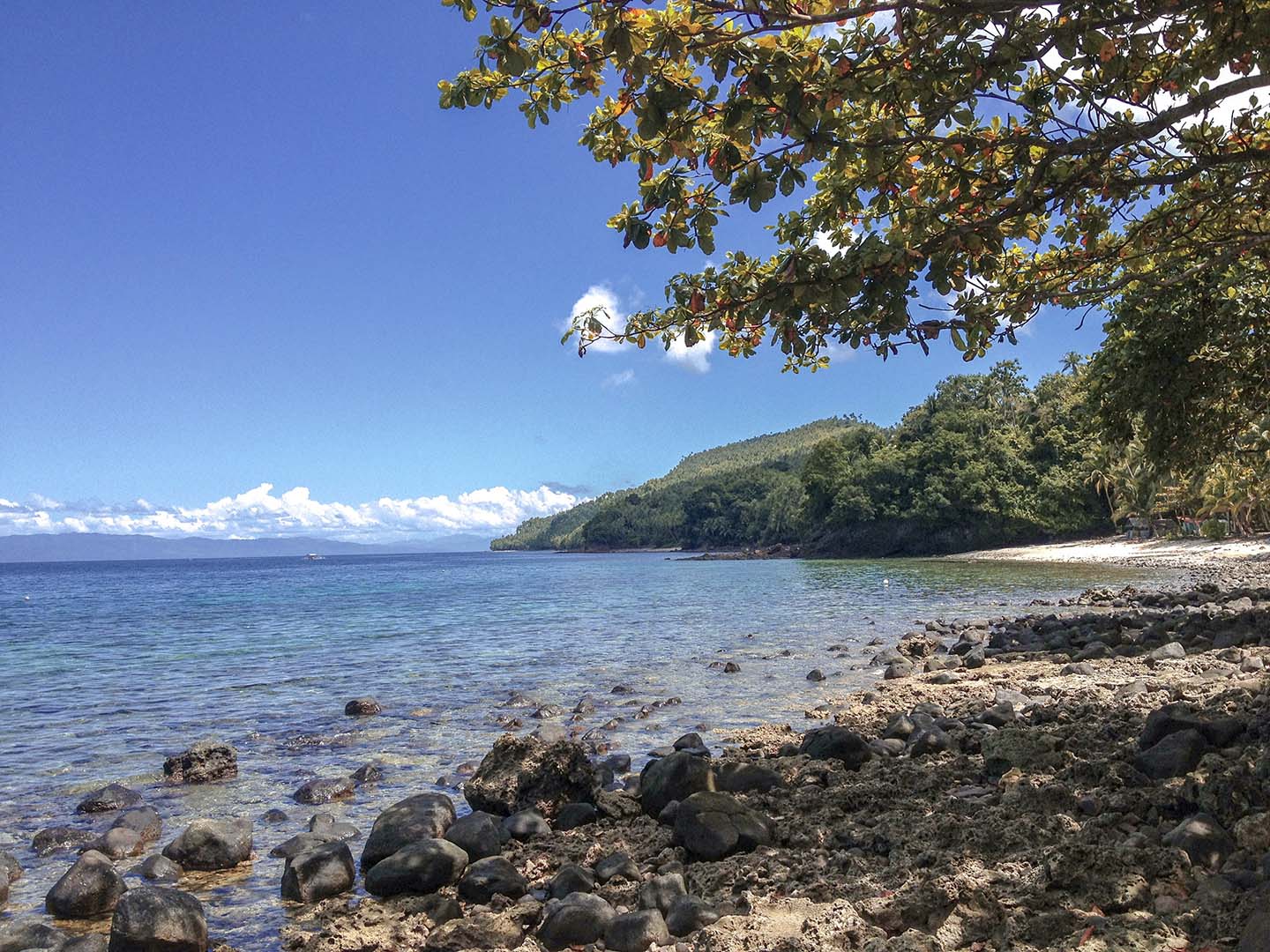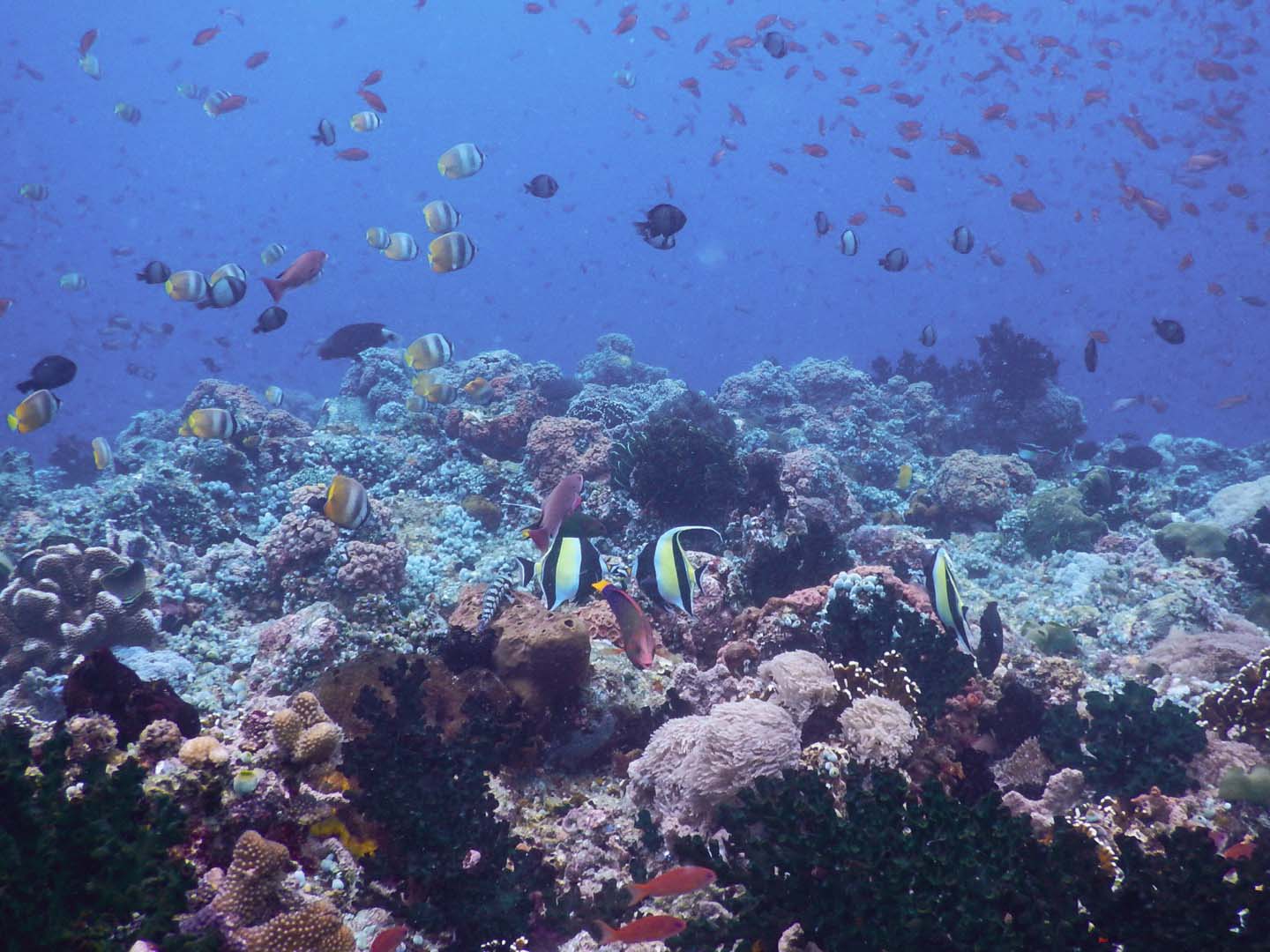Nestled in the very heart of the Philippines lies Puerto Galera, a true tropical haven renowned for its pristine ivory beaches, sparkling azure waters, and breathtaking natural splendor. What sets this destination apart from the others is the exceptional opportunities for scuba diving.
With over 30 dive sites, there’s an underwater adventure waiting for every type of diver. Embark on a breathtaking adventure as you descend through the depths of the ocean, drifting across stunning slope reefs adorned with vibrant coral gardens, towering cliffs, and mysterious canyons.
For those who seek adventure, Puerto Galera boasts a treasure trove of sunken vessels to discover. Among them, the Alma Jane stands out as a hauntingly beautiful wreck, waiting to be explored by thrill-seeking divers.
The captivating waters of Puerto Galera have beckoned me time and time again. With each visit, I’ve delved deeper into its mysterious depths. I have completed more than 25 dives in Puerto Galera and I can confidently confirm that it is one of the best dive destinations in the Philippines.
In this Puerto Galera guide, I will share my personal recommendations for making the most of your Puerto Galera diving trip. I’ll give you some insider tips on diving Puerto Galera, including must-see dive spots, dive centers, and more.
- About Puerto Galera
- Puerto Galera Dive Sites
- Marine Species in Puerto Galera
- Puerto Galera Diving Conditions
- Verde Island Passage via Puerto Galera
- When is the best time to go diving in Puerto Galera?
- Dive Shops in Puerto Galera
- Puerto Galera Liveaboard
- What to Pack for Puerto Galera Diving
- How to get to Puerto Galera
About Puerto Galera
Puerto Galera is located on the northern coast of the island of Mindoro in the Philippines, about 130 kilometers south of Manila. The town is nestled in a natural harbor surrounded by lush green mountains, with stunning white sand beaches and crystal-clear waters. The area is home to the indigenous Mangyan people, who have been living in the region for centuries.
In the early 16th century, Puerto Galera served as a trading port for the Chinese and the Malays. Today, tourism is a major industry in Puerto Galera, with visitors coming from all over the world to experience the area’s natural beauty, rich history, and vibrant culture.
In addition to scuba diving, other popular activities include island hopping, snorkeling, hiking, and beach-hopping. The town has a range of accommodations, from budget-friendly hostels to luxurious resorts, and a variety of dining options offering traditional Filipino cuisine and international dishes.
Puerto Galera Dive Sites
With over 30 dive sites around the area, Puerto Galera has something for every level of diver, from beginner to advanced. Whether you’re interested in exploring shipwrecks, canyons, or simply admiring the vibrant coral gardens, Puerto Galera’s dive sites will not disappoint.
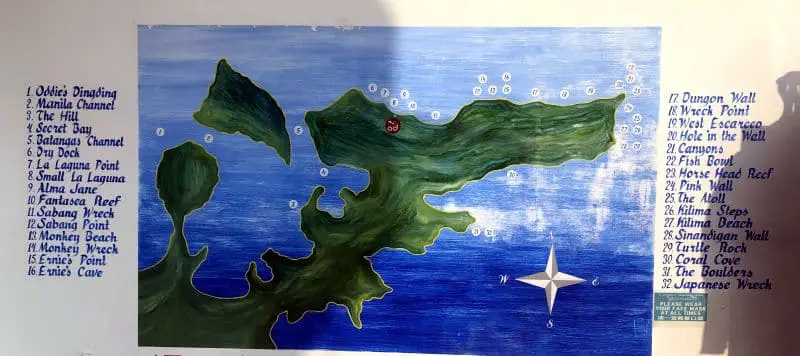
Here are some of the dive sites I’ve visted and recommend you see for yourself as well.
Canyons
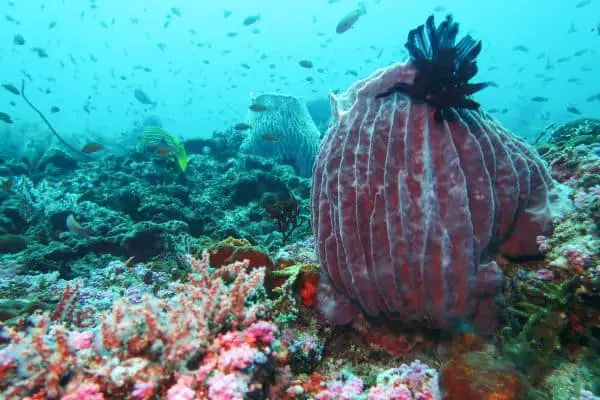
The Canyons is one of Puerto Galera’s most popular diving destinations, recognized for its unusual topography and diverse marine life. The spot, which is only a short boat trip from Sabang Beach, is made up of a series of tiny canyons and swim-throughs packed with colorful reef fish, pelagic species, and macro life.
The Canyons are also noted for their excellent visibility, which allows underwater photographers to get magnificent photographs.
Due to the powerful currents that might be experienced, the Canyons dive location can present some problems, particularly for beginning divers. Divers must have enough expertise and training in dealing with currents.
Boulders
Boulders is a popular dive site located in Puerto Galera, Philippines. It is a drift dive that is characterized by large rock formations and boulders, which provide a stunning underwater landscape for divers to explore.
Montani
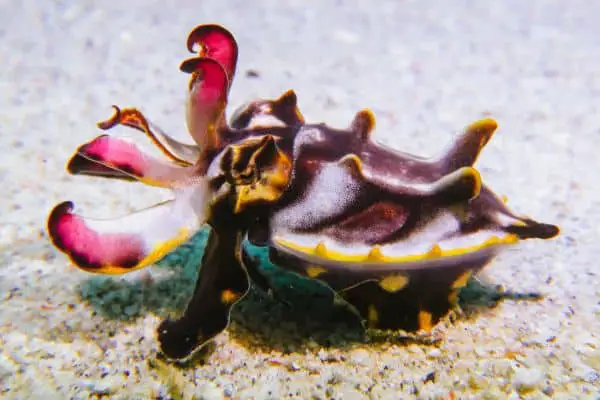
Montani is a somewhat shallow dive site, with a maximum depth of around 18 meters, it is suitable for both novice and expert divers. The dive site is named after the nearby Montani Beach Resort.
It is a muck diving spot known for its macro life, making it an ideal location for underwater photographers. Divers can see nudibranchs, shrimp, crabs, seahorses, cuttlefish, frogfish, and a variety of unusual sea slugs.
Coral Cove
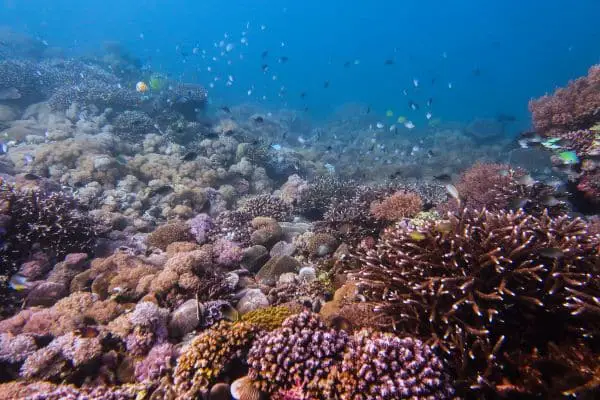
One of the best things about the Coral Cove dive is that you can see both hard and soft corals, which come in many different shapes, sizes, and colors. The dive spot has many different coral formations that are home to many different kinds of marine life. Divers can expect to see groups of colorful tropical fish like angelfish, butterflyfish, and wrasses, as well as other animals like moray eels, octopuses, and sea snakes.
Hole in the Wall
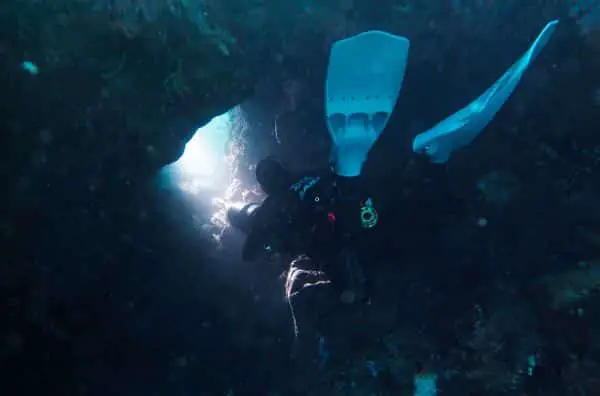
The Hole in the Wall diving site as the name implies, contains a big hole in a rock formation that divers can swim through. The hole itself is surrounded by a swarm of colorful reef fish such as angelfish, damselfish, and clownfish. Divers can swim through the hole and emerge on the other side to find a sandy bottom and a slew of coral heads.
The surrounding coral reef at Hole in the Wall is teeming with marine life. The site is known for its tranquil and gentle currents, which make it perfect for divers of all levels of experience.
Alma Jane
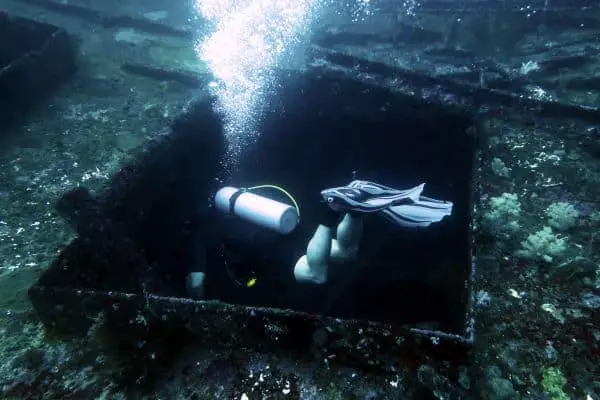
The Alma Jane diving site is a 30-meter long cargo ship that was sunk in 2003 to construct an artificial reef and diving attraction. It is anchored on a sandy bottom at a depth of around 30 meters and is covered in soft and hard corals, sponges, and other marine life.
The wreck has evolved into a vibrant ecosystem, with colorful reef fish, and macro life such as nudibranchs and shrimp.
The Alma Jane dive site is particularly noted for its strong currents and depth. It is only appropriate for experienced divers.
Secret Bay
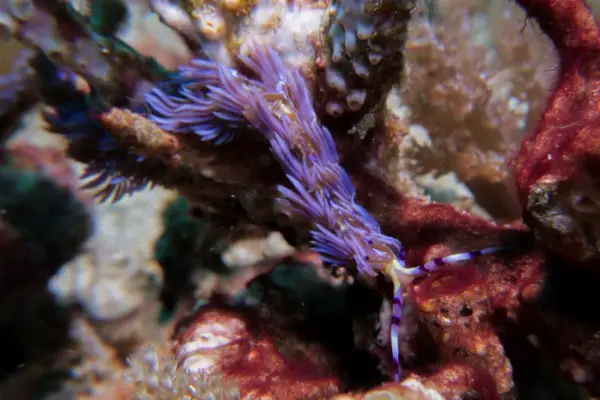
The Secret Bay as the name suggests, is tucked away in a secluded bay, accessible only by boat. The dive site is known for a wide variety of macro life and critters to be discovered.
The dive typically starts with a descent into the shallow sandy bottom of the bay, where divers look for camouflaged creatures like frogfish, scorpionfish, octopuses, cuttlefish, sea horses, and more. The dive site is also known for its colorful nudibranchs and sea slugs, which come in a variety of shapes and sizes.
Giant Clam
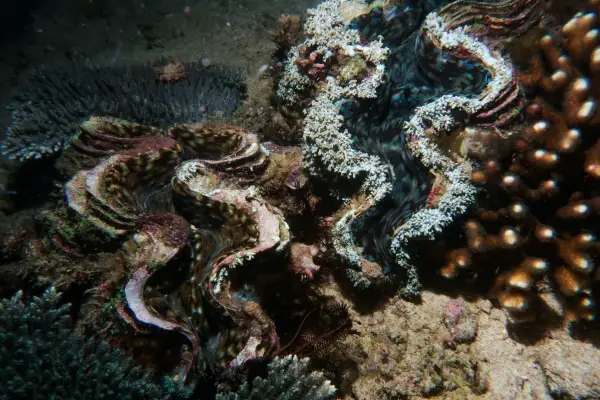
Because of its shallow depth and calm seas, the Giant Clam dive site at Puerto Galera is a popular spot for divers of all levels. This location is well-known for its abundance of enormous clams, which can grow to be up to a meter long.
The tridacna species on this site was transplanted in the 1980s as part of a Philippine government program to encourage giant clam conservation.
Manila Channel
The Manila Channel is a dive site situated between two islands. This location is well-known for having strong currents, which make it an excellent place to practice drift diving and to observe larger marine species.
The channel drops down to a depth of approximately 30 meters. Here you will be able to observe numerous types of hard and soft corals, sponges, and other forms of marine life. The current becomes more powerful as divers proceed through the channel
Marine Species in Puerto Galera
Clownfish, angelfish, butterflyfish, damselfish, groupers, and snappers can be found in the surrounding seas. Large schools of jacks, barracuda, and trevally can also be seen patrolling the reefs.
Several species of sharks can be found in Puerto Galera, including blacktip reef sharks, whitetip reef sharks, and bamboo sharks. Green sea turtles and hawksbill sea turtles are commonly spotted here as well.
Puerto Galera is also known for its macro life, with a profusion of nudibranchs, sea slugs, and crustaceans such as crabs and lobsters. Cuttlefish, octopuses, and squid are typical sightings, as are colorful and interesting species like mantis shrimp, and pipefish.
The coral reefs in the area are thriving, with a variety of hard and soft corals providing a brilliant and colorful backdrop to the underwater world.

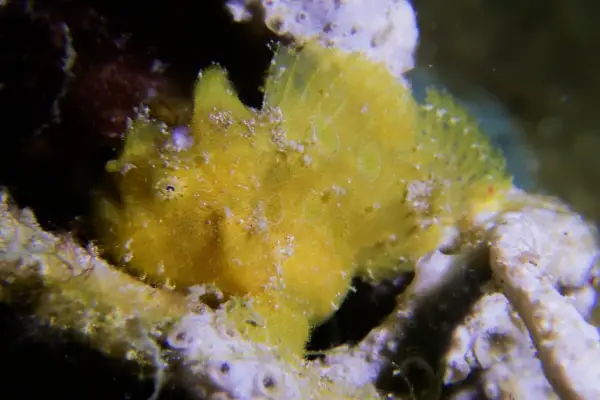
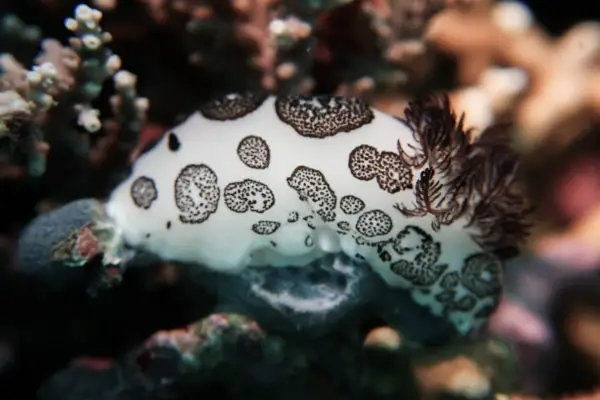
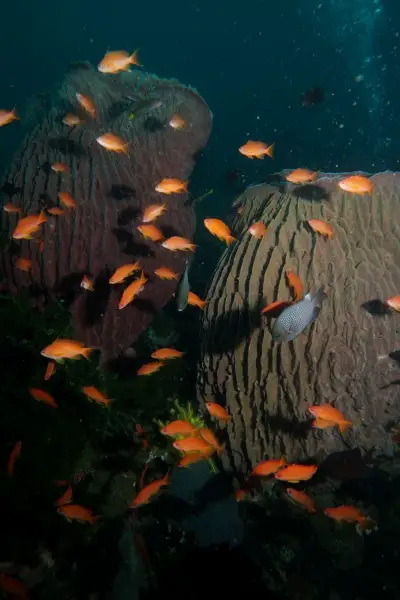
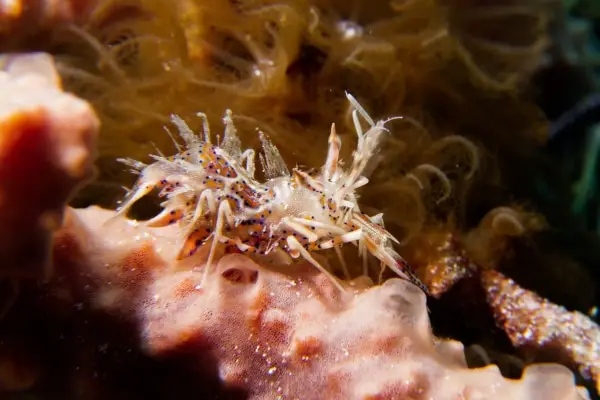
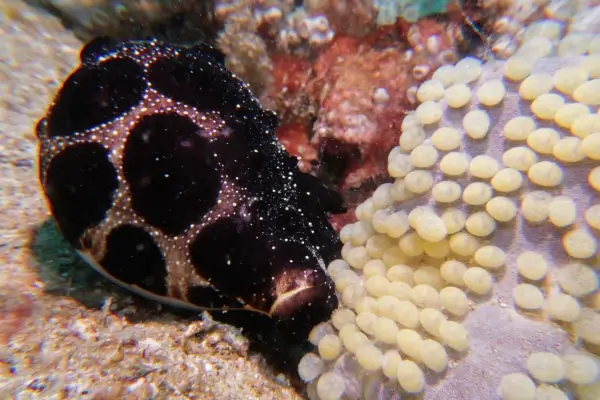
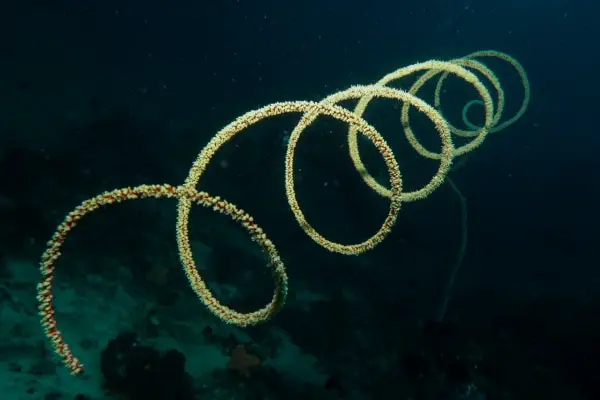
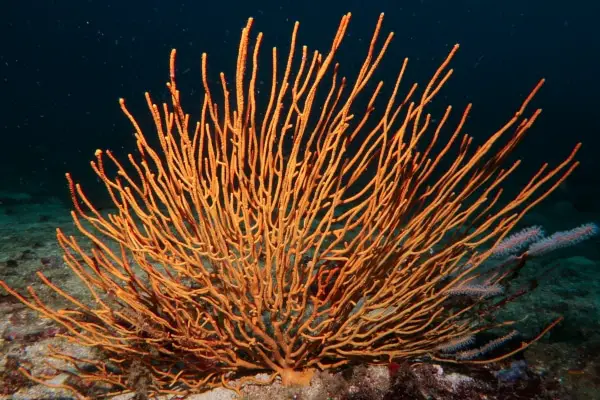
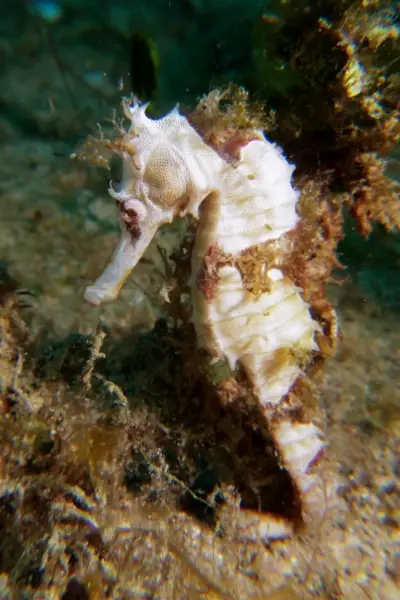
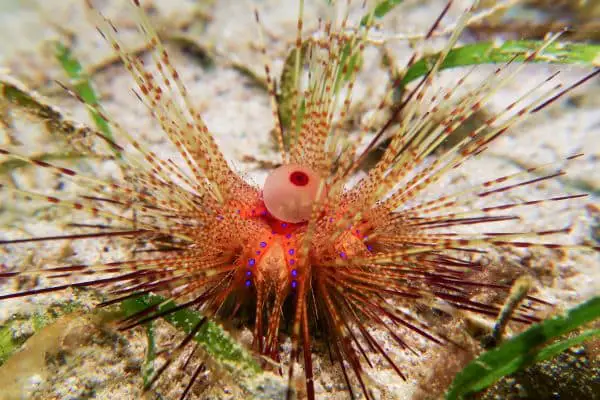
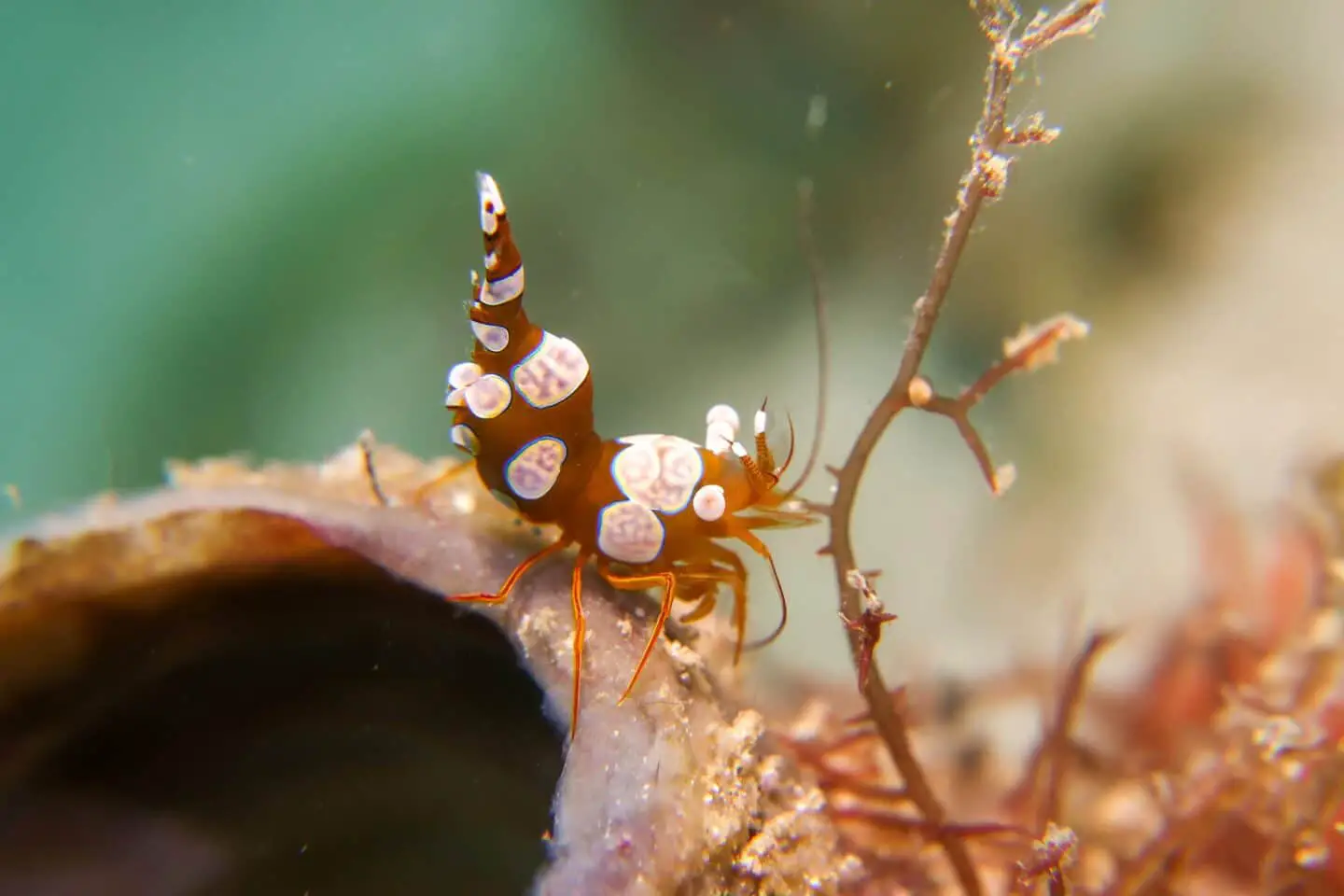
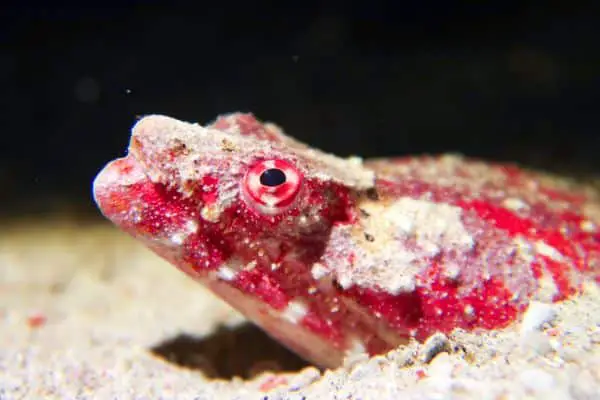
If you’d like to learn more about marine life you might encounter in the Philippines, read these posts:
15 Dangerous Sea Creatures in the Philippines
Marine Life in the Philippines: 100 Sea Creatures You Must See
Puerto Galera Diving Conditions
Water Temperature
The water temperature in Puerto Galera ranges from 24 to 30 degrees Celsius (75.2 to 86 degrees Fahrenheit) throughout the year.
A 3mm wetsuit is recommended for most divers. Some divers may prefer a 5mm wetsuit for added warmth, especially for night dives. This is a matter of personal preference and tolerance for cold.
Visibility
The water visibility for Puerto Galera diving can vary depending on the season, weather conditions, and dive site. Generally, the visibility ranges from 10-30 meters (33-98 feet), with some sites offering up to 40 meters (131 feet) of visibility on a good day.
The best visibility is usually during the dry season, from November to May, when the water is calmer and clearer. However, even during the rainy season, from June to October, the visibility can still be good at certain sites.
Nitrox
It is recommended to dive with enriched air or nitrox in Puerto Galera. Diving depths can range from 18 meters to over 40 meters, and nitrox can increase bottom time and reduce the risk of decompression sickness. Nitrox is available at most dive centers on the island. If you are not yet certified for Nitrox, you can easily get certified with the PADI or SSI dive shops on Puerto Galera.
Night Diving in Puerto Galera
Night diving at Puerto Galera should not be missed. After sunset, the underwater world changes, revealing a different side of marine life. The creatures that were hiding during the day now come out to hunt and feed, creating a vibrant and active underwater environment. It’s an excellent opportunity to see some of the more elusive marine life, such as crustaceans, cephalopods, and even reef sharks.
You can also do blackwater diving in Puerto Galera. This type of diving is done in the middle of the ocean where water appears black. During the night, plankton and other rare creatures emerge from the deep to feed. In a blackwater dive, you get the chance to see weird and almost alien-like creatures like jellyfish, squid, octopuses, and other pelagic critters.
Learn more on this article: Blackwater Diving for Beginners: Complete Guide for First-Timers
Verde Island Passage via Puerto Galera
Verde Island is located just off the coast of Puerto Galera. The island is home to some of the most diverse and abundant marine species in the world, including colorful coral gardens, schools of tropical fish, and pelagic species like sharks, barracudas, and tuna.
Diving in Verde Island from Puerto Galera typically involves a day trip on a local dive boat, which departs from Sabang Beach. The boat ride takes about an hour.
When is the best time to go diving in Puerto Galera?
The dry season or during the Amihan months, from December to May, is the greatest time to go diving in Puerto Galera. The waters are normally calmer and the visibility is better during this time. This creates optimal diving conditions and allows divers to completely appreciate Puerto Galera’s underwater splendor.
It is crucial to note, however, that Puerto Galera is a year-round diving destination, and diving may still be done from June to November. While visibility may be limited during this time, you can still see the incredible marine life that Puerto Galera has to offer.
Recommended reading:
Amihan and Habagat: Diving Seasons in the Philippines Explained
Best Time To Dive in the Philippines + Monthly Guide on Where to Go
Dive Shops in Puerto Galera
Puerto Galera is home to several reputable dive shops. Here are some of the highly recommended dive centers in Puerto Galera:
Arkipelago

Check rates and availability on Agoda
Atlantis Dive Shop

Check rates and availability on Agoda
Asia Divers

Check rates and availability on Agoda
Lalaguna Dive Resort

Check rates and availability on Agoda
Scandi Divers

Check rates and availability on Agoda
These Puerto Galera dive centers provide a variety of dive courses, packages, and lodging alternatives to suit every budget and level of diving expertise. These diving shops are ideal for anyone wishing to discover the underwater world of Puerto Galera since they have competent and certified dive instructors, well-maintained dive gear, and a focus on customer satisfaction.
Puerto Galera Liveaboard
If you would like to go on a Puerto Galera liveaboard. You can check out M/Y Resoulte. They operate in the region, which includes dive destinations such as Verde Island, Coron, and Apo Reef.
Read my full review of Resolute’s Coron-Apo Reef-Puerto Galera Liveaboard
What to Pack for Puerto Galera Diving
Here is the scuba equipment and dive gear I brought when I went diving in Puerto Galera.
My Scuba Diving Gear
Regulator: Scubapro MK25 Evo, C300 and C200 2nd Stage
BCD: Aqualung Axiom
Mask: TUSA M-212 Freedom Ceos
Snorkel: TUSA SP-170 Platina Hyperdry II
Booties: Poseidon Pink Dive Boots
Fins: Problue
Wetsuit: Seavenger
Vest Hoodie: Scubapro Hybrid Hooded Vest
Dive Watch: Suunto D4i Novo
Dive Knife: Aqualung Blunt Tip Knife
Dive Leggings and Rash: Blue Adaptation Coral Sea Fan
My Underwater Camera Gear
Underwater Camera: Canon G7X Mark II
Underwater Camera Housing: Fantasea FG7XII
Video Lights: Big Blue AL1200XP
Underwater Action Camera: GoPro Hero9
360 Camera: Insta360 X3
> Canon G7X Mark II full review
> Insta360 X3 underwater camera review
> Scuba diving camera recommendations for beginners.
Dive Insurance
Divers Alert Network (DAN)


Need travel insurance for your trip? Get a quote from Safety Wing.
How to get to Puerto Galera
- Fly to Manila via Ninoy Aquino International Airport (NAIA)
- From Manila, travel to Batangas, which is the jump-off point for Puerto Galera. You can take a private car or van, hire a taxi, or take a bus from Cubao or Pasay City in Metro Manila to Batangas Pier. The estimated travel time is 3 hours.
- From the Batangas Pier, catch a ferry to Puerto Galera. There are several ferry operators to choose from like Ocean Jet or Montenegro Shipping Lines. The ferry ride takes approximately 1 to 2 hours.
- When you arrive in Puerto Galera, you can take a tricycle to your hotel or dive center. Tricycles are the main mode of transportation in Puerto Galera, and they are readily available at the pier.
For your convenience and stress-free travel, you can coordinate with your preferred dive center for private transfers from Manila to Puerto Galera. You can also check getTransfer.com if you prefer to travel in a private vehicle with a driver fro mpoint to point.
